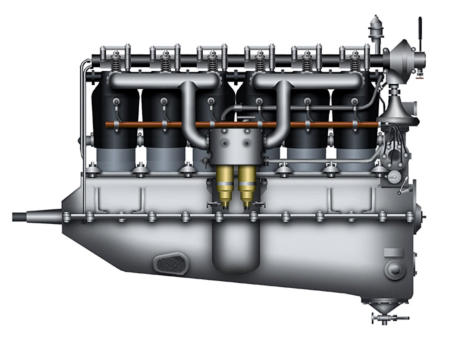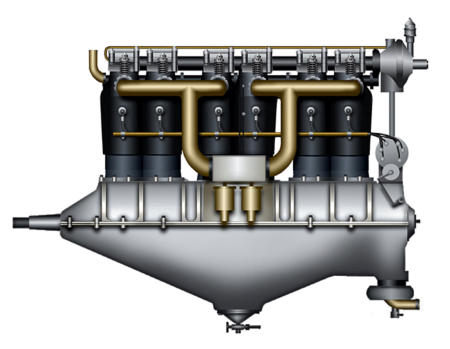
Scroll down to see all the illustrations on the page




Pages








Pages




Austin A40 Somerset
The A40 Somerset was produced by Austin from 1952 to 1954
and replaced the A40 Devon on the production lines. The car
was basically a re-bodied A40 Devon, being comparable in size
to its predecessor and sharing a number of components which
included a similar 1,200 cc engine, which was slightly uprated
to produce 42 hp which gave the car a top speed of 70 mph,
although the car was still under-powered if fully loaded. The
Somerset featured an updated body style with flowing lines
which resembled the company’s larger Austin A70 Hereford.
The car was designed to improve export sales, particularly
S P E C I F I C A T I O N :
Weight: 2,232 lbs (0.99 tons)
Dimensions: Length 13 ft 2 ins,
Width 5 ft 3 ins, Height 5 ft 2½ ins
Wheelbase: 7 ft 8 ins
Powerplant: 1 x 1,200 cc B Series
petrol engine rated at 42 hp
Torque: 62 lbs ft
Performance: Top speed 70 mph
Number Built: 173,306
America, and initially was offered only as a four door saloon,
and for seven pounds extra you could have a sliding roof as a
factory option. A two door convertible was introduced in late
1952 which was marketed as the Austin A40 Somerset Coupé.
The convertible differed from the saloon in having separate
front seats that folded forward to give access to the rear. An
additional variant known as the Austin A40 Sports, also a
convertible, completed the range. The success of the A40
Somerset helped to pave the way for the creation of the British
Motor Corporation in 1952.

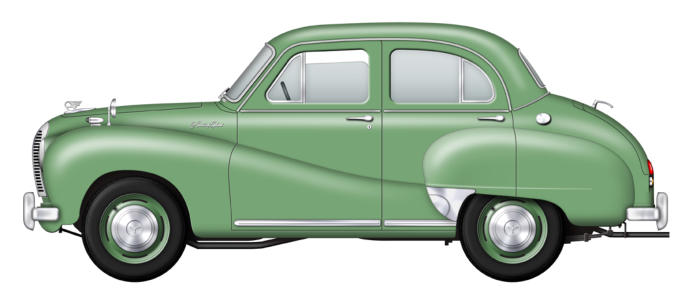
Austin A40 Somerset Coupé
The A40 Somerset was produced by Austin from 1952 to 1954
and replaced the A40 Devon on the production lines. The car
was basically a re-bodied A40 Devon, being comparable in size
to its predecessor and sharing a number of components which
included a similar 1,200 cc engine, which was slightly uprated
to produce 42 hp which gave the car a top speed of 70 mph,
although the car was still under-powered if fully loaded. The
Somerset featured an updated body style with flowing lines
which resembled the company’s larger Austin A70 Hereford.
The car was designed to improve export sales, particularly
S P E C I F I C A T I O N :
Weight: 2,232 lbs (0.99 tons)
Dimensions: Length 13 ft 2 ins,
Width 5 ft 3 ins, Height 5 ft 2½ ins
Wheelbase: 7 ft 8 ins
Powerplant: 1 x 1,200 cc B Series
petrol engine rated at 42 hp
Torque: 62 lbs ft
Performance: Top speed 70 mph
Number Built: 173,306
America, and initially was offered only as a four door saloon,
and for seven pounds extra you could have a sliding roof as a
factory option. A two door convertible was introduced in late
1952 which was marketed as the Austin A40 Somerset Coupé.
The convertible differed from the saloon in having separate
front seats that folded forward to give access to the rear. An
additional variant known as the Austin A40 Sports, also a
convertible, completed the range. The success of the A40
Somerset helped to pave the way for the creation of the British
Motor Corporation in 1952.

Alfa Romeo 158
The Alfa Romeo 158, and its successor the Alfa Romeo 159 was
one of the most successful racing cars ever designed, and
during their careers of the 158 won 47 Grands Prixs from the
54 they entered. The 158 made its debut in August 1938 at
Livorno, Italy, where Emilio Villoresi took the car's first victory.
More successes followed at the Coppa Acerbo, Coppa Ciano
and Tripoli Grand Prix in May 1940, but after Italy entered
World War Two in June development work was halted. Work on
the car resumed in 1946, and in 1948 made a tragic debut in
the Swiss Grand Prix when Achille Varzi lost control and was
S P E C I F I C A T I O N :
Weight: 1,543 lbs
Dimensions: Length 13 ft 8 ins,
Width 5 ft 1 ins, Height 3 ft 8 ins
Wheelbase: 8 ft 2½ ins (2.5 m)
Powerplant: 1 x 1.5 ltr Alfa Romeo 158
supercharged straight eight engine
rated at 350 hp
Transmission: Alfa 4-speed manual
Performance: Top speed 180 mph
killed. In 1950 the Formula One European Championship was
introduced, and during that first season the 158 won ever race
it entered, a remarkable feat for a car that had its origins in a
design from 1938. The Alfa Romeo team included several
talented drivers which included Juan Manuel Fangio, who won
the Championship five times during the 1950s. In 1951 the 159
appeared which had a reworked rear suspension and an
uprated engine, but at the end of the season Alfa Romeo was
forced to retire from Grand Prix racing. The car's last win was in
1953 at the Merano Grand Prix in Italy.
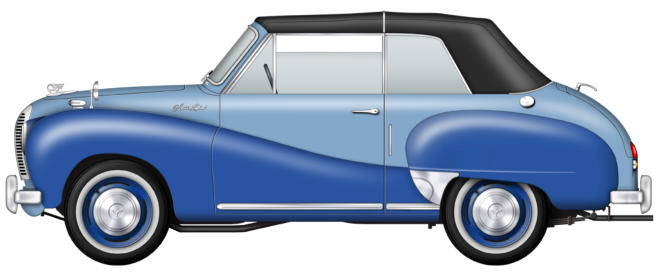


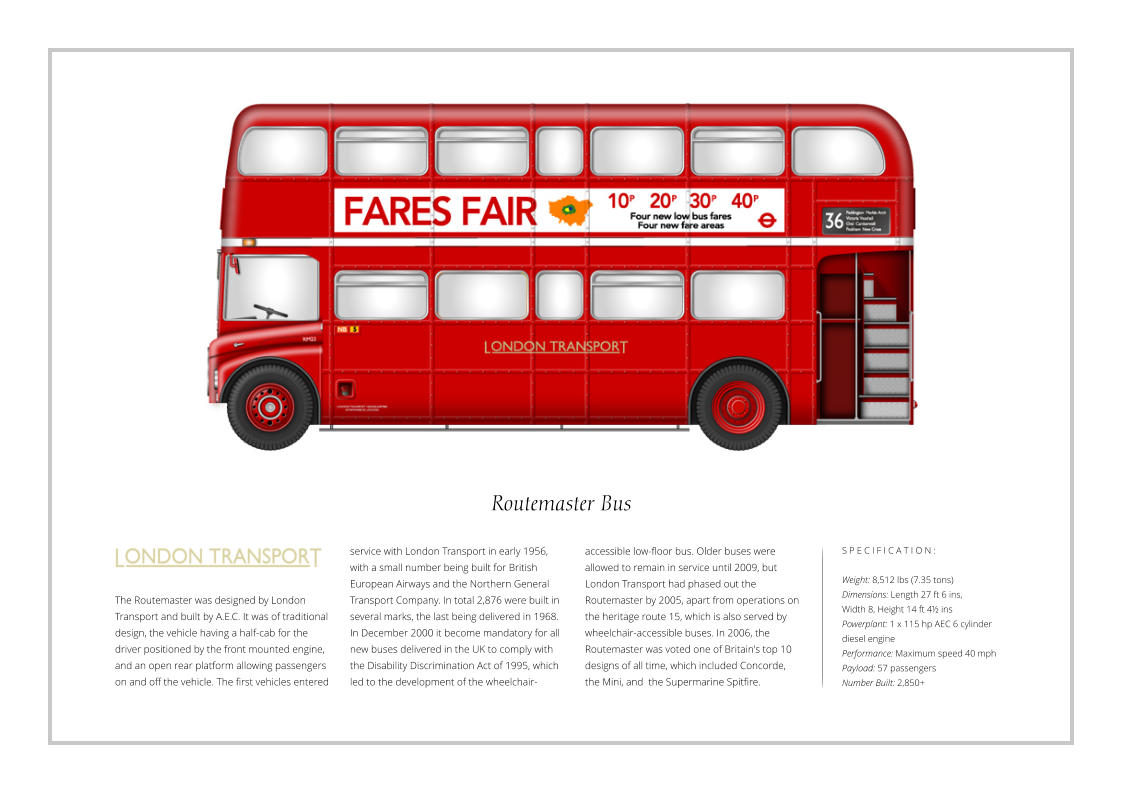
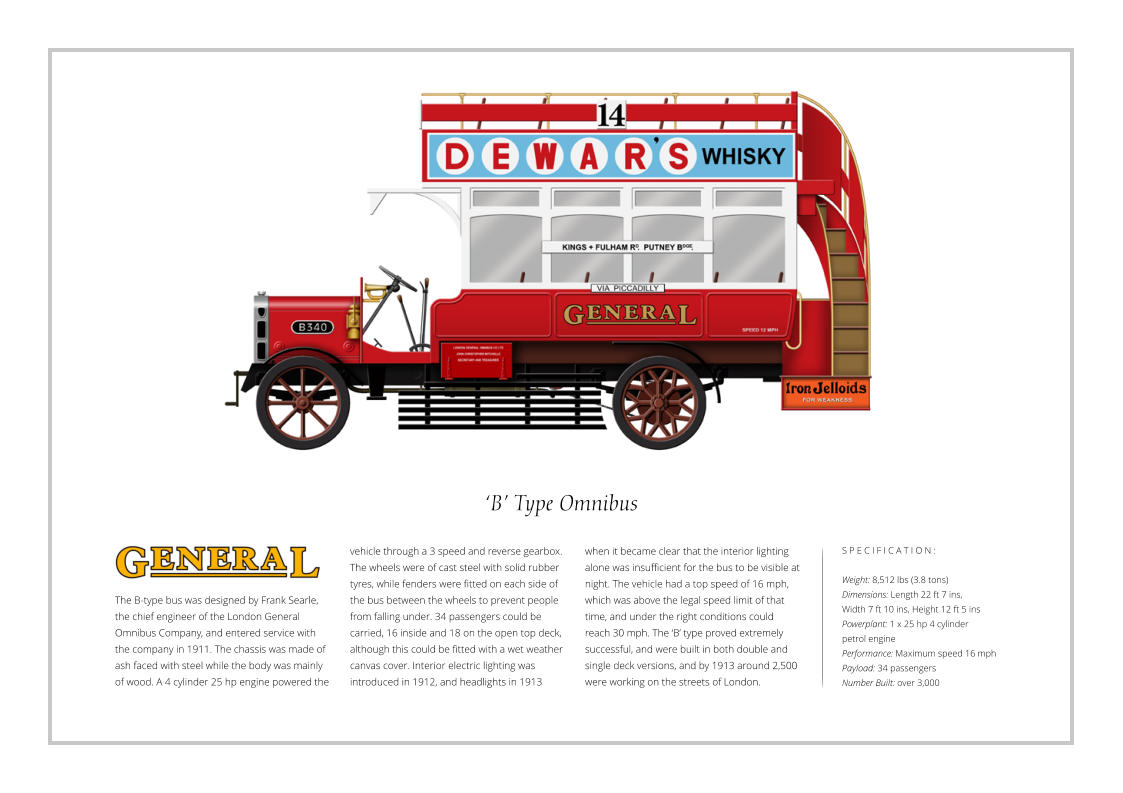
Siddeley Puma
The Siddeley Puma British aero engine was based on a design
produced by B.H.P. (Beardmore, Halford, Pullinger) and was
used during the First World War aircraft, most notably to power
the DeHavilland D.H.9 which entered service in 1917. Siddeley
had taken over development of the engine which became the
Siddeley Puma, a lightweight version of the B.H.P. engine rated
at 300 hp, which was expected to give the D.H.9 an outstanding
performance. Problems with the reliability of the engine led to
it being de-rated to 230 hp, and a drop in performance which
was below that of the D.H.4 which it was intended to replace.
S P E C I F I C A T I O N :
Type: Six cylinder water-cooled
inline piston engine
Weight: 645 lbs
Dimensions: Length 70 ins,
Width 24 ins, Height 43½ ins
Cubic Capicity: 1,883 cc
Bore/Stroke: 5.71 inches/7.48 inches
Power Output: 250 hp at 1,400 rpm
265 hp at 1,500 rpm
Number Built: 4,000
Production of the engine ran from August 1917 until December
1918 when all outstanding orders were cancelled, by which
time over 4,000 engines had been delivered. Production
continued under the name of Armstrong Siddeley Puma after
the company was bought by Armstrong Whitworth to became
Armstrong Siddeley. Frank Halford, the original designer of the
engine and now with the Aircraft Disposal Company, continued
to develop the engine in an attempt to produce its intended
power output. He eventually achieved this in 1926 and the
engine was then marketed as the ADC Nimbus.
A E R O E N G I N E
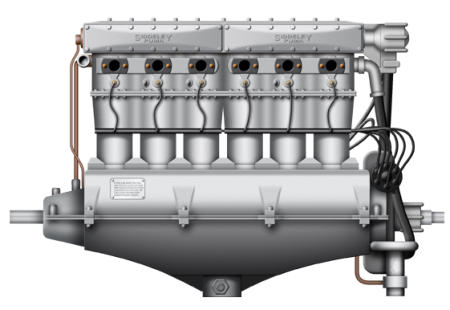
Mercedes Daimler D.II
The Mercedes D.II was an inline six-cylinder, single overhead
camshaft, liquid-cooled aircraft engine built by Daimler during
the early stages of World War One. The engine was at the lower
end of the power range of contemporary engines, being rated
at between 110 to 120 hp, and generally outperformed by
rotaries whose power-to-weight ratio tended to be better. The
engine was used for several military aircraft, including the
Aviatik B.II and Albatros B.I and B.II reconnaissance aircraft
and the Fokker D.I and Halberstadt D.II scout fighters. The D.II
engine was only produced for a short time, but its design
S P E C I F I C A T I O N :
Type: Six cylinder water-cooled
inline piston engine
Weight: 449 lbs
Dimensions: Length 1,650 mm,
Width 490 mm, Height 1,072 mm
Cubic Capicity: 9.4 L
Bore/Stroke: 140 mm/160 mm
Power Output: 120 hp at 1,400 rpm
Compression Ratio: 4.5:1
Number Built: Unknown
formed the basis for the far more successful Mercedes D.III.
The D.III was a scaled up version of the D.II which was rated at
160 hp, and was a popular powerplant for German aircraft by
1916. Development of the engine continued which produced
the 170 hp D.IIIa which powered the Albatros D.III fighter in
1917 and the Fokker D.VII in 1918, often regarded as the best
fighter aircraft produced in World War One. The final version of
the engine was the D.IIIav which was introduced in October
1918. With this engine a higher compression ratio was achived
while running at higher rpm rate achieved 200 hp.
A E R O E N G I N E


Mercedes Daimler D.III
The Mercedes D.II was an inline six-cylinder, single overhead
camshaft, liquid-cooled aircraft engine built by Daimler during
the early stages of World War One. The engine was at the lower
end of the power range of contemporary engines, being rated
at between 110 to 120 hp, and generally outperformed by
rotaries whose power-to-weight ratio tended to be better. The
engine was used for several military aircraft, including the
Aviatik B.II and Albatros B.I and B.II reconnaissance aircraft
and the Fokker D.I and Halberstadt D.II scout fighters. The D.II
engine was only produced for a short time, but its design
S P E C I F I C A T I O N :
Type: Six cylinder water-cooled
inline piston engine
Weight: 449 lbs
Dimensions: Length 1,650 mm,
Width 490 mm, Height 1,072 mm
Cubic Capicity: 9.4 L
Bore/Stroke: 140 mm/160 mm
Power Output: 120 hp at 1,400 rpm
Compression Ratio: 4.5:1
Number Built: Unknown
formed the basis for the far more successful Mercedes D.III.
The D.III was a scaled up version of the D.II which was rated at
160 hp, and was a popular powerplant for German aircraft by
1916. Development of the engine continued which produced
the 170 hp D.IIIa which powered the Albatros D.III fighter in
1917 and the Fokker D.VII in 1918, often regarded as the best
fighter aircraft produced in World War One. The final version of
the engine was the D.IIIav which was introduced in October
1918. With this engine a higher compression ratio was achived
while running at higher rpm rate achieved 200 hp.
A E R O E N G I N E

